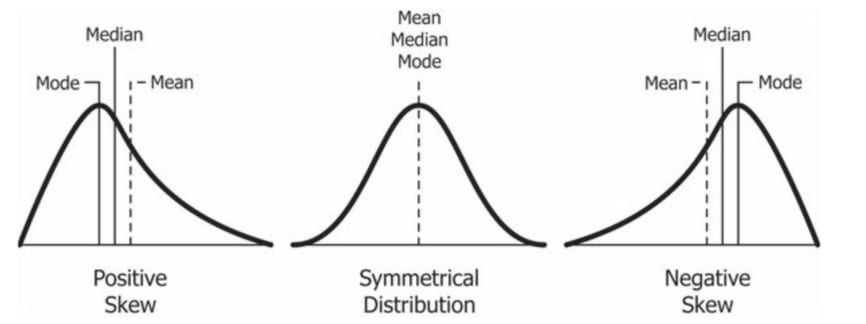Skewness Definition
Skewness refers to the abnormality of data in a certain direction. If the tail tapers on the right side, then the distribution is said to have positive skew. If the tail tapers on the left side, then it is said to have a negative skew.
Skewness Example
If the distribution is positively skewed, then the mean of the data will be larger than the median of it. This is because there are larger values on the max extreme causing the positive skew. One example of this is the US income disparity. This graph below represents the 2015 median and mean household income.
The mean income is over $20,000 more than the median income due to the extremely high earning millionaires and billionaires. Below is a table of the top percent earning buckets causing the skew.
Measuring Skewness
There are two different ways to measure skewness. The two values used to measure it are called Pearson's coefficients.
The first one is used if the distribution has a clear mode. If not, the second one is used.
Information and pics gotten from:
https://www.investopedia.com/personal-finance/how-much-income-puts-you-top-1-5-10/
https://www.investopedia.com/terms/s/skewness.asp
https://fas.org/sgp/crs/misc/R44705.pdf
https://en.wikipedia.org/wiki/Skewness






Top comments (0)